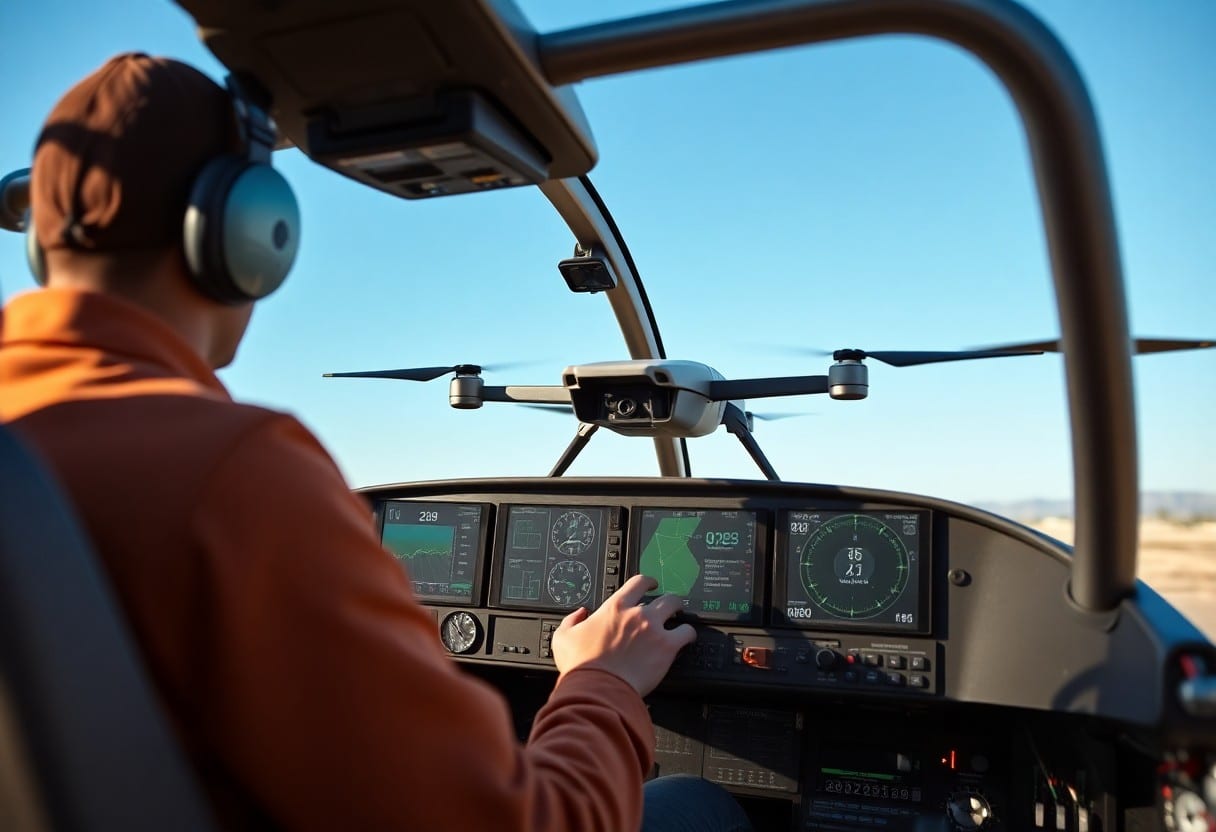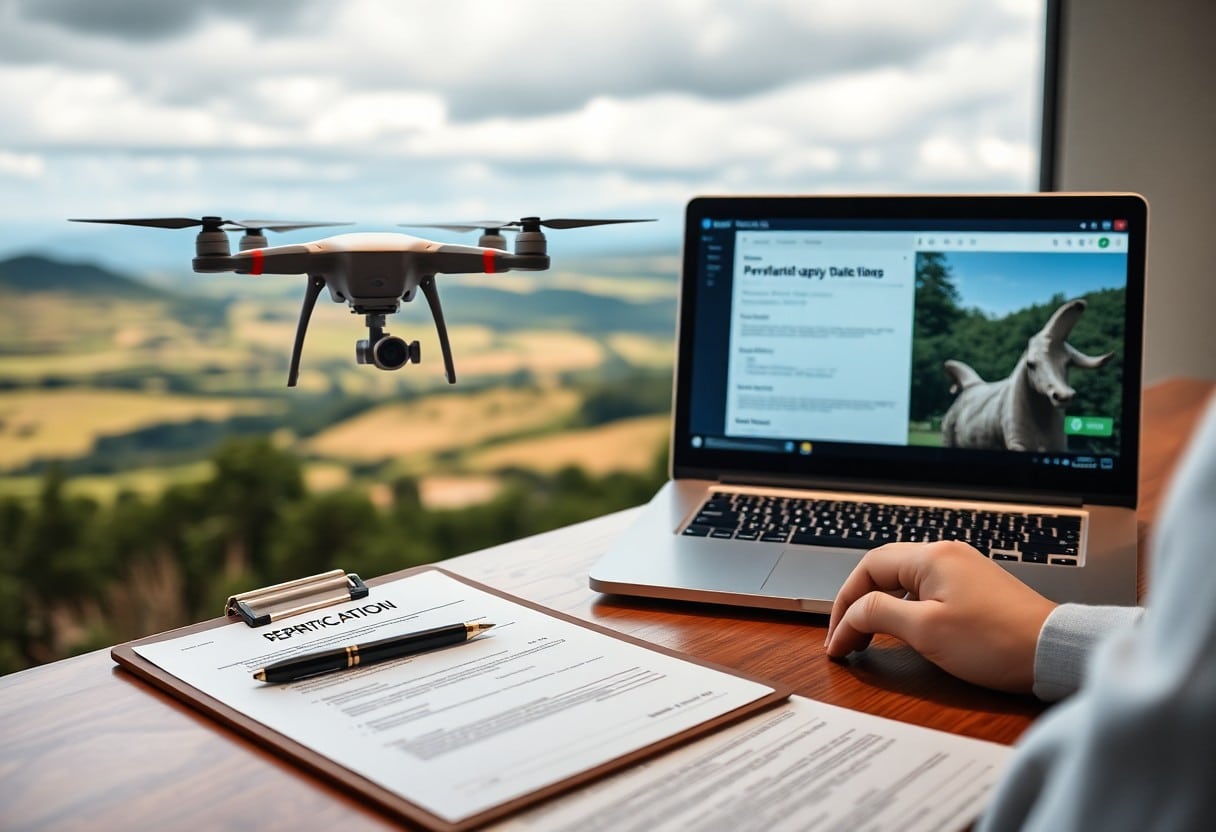10 Key Steps to Follow for Safety Under the Unmanned Aircraft Regulations
Keeping safe is your top priority during drone operations. Follow theseTen Key Stepswill help you inDrone RegulationsSafe operation under to avoid potentialDangerousrespond in singingLegal IssuesThe steps will guide you in ensuring the success and safety of all your flight operations. Whether you are a novice or an experienced operator, these steps will guide you in ensuring the success and safety of all your flight operations. Follow this article to learn more about how to fly a drone in a compliant and safe manner.
Summary of key points:
- Compliance:Ensure that flight operations comply with drone rules and relevant laws.
- Keep your eyes open:Keep your eyes on the drone throughout the flight.
- High risk areas:Avoid flying in densely populated or sensitive areas.
- Weather Assessment:Carefully evaluate current and forecasted weather conditions before flying.
- Flight Plan:Develop a detailed flight plan, including takeoff and landing and emergency procedures.
- Monitor status:Continuously monitor the status of the drone and its surroundings during flight.
- Educational training:Attend regular training related to drone operation to enhance skills.
Understanding Regulations
In drone operations, understanding Relevant legislation It's important. These regulations not only ensure your own safety, but also protect the property and lives of others. You need to be aware of local laws and applicable drone regulations so that you can fly legally and safely.
Study of local laws
Each region has different legal requirements for drone use. You will need to Thorough investigation Your local drone laws, including flight altitudes, no-fly zones and other restrictions. Ensuring that your actions comply with local laws is not only a sign of compliance, but also a sign of social responsibility.
Understanding Airspace Classification
The operation of a drone must follow the rules of airspace classification. U.S. airspace is divided into different categories, and it is important that you understand these categories and how they apply to you. Restrictions and requirementsThe Government is committed to ensuring the safe operation of UAVs. For example, certain airspace may be restricted to drone flights, while other airspace requires special permission.
Airspace classification is usually divided into five categories: A, B, C, D, and E. Each category has its ownRegulations and Flight RequirementsClass A airspace is for commercial flights at high altitudes with strict restrictions on drone operations, while Class B, C, and D airspace are controlled areas in and around airports, where you need to be aware of flying altitudes and non-consensual interferences with other aircraft when flying in these areas. Understanding the characteristics of these airspaces is fundamental to your safe operation.
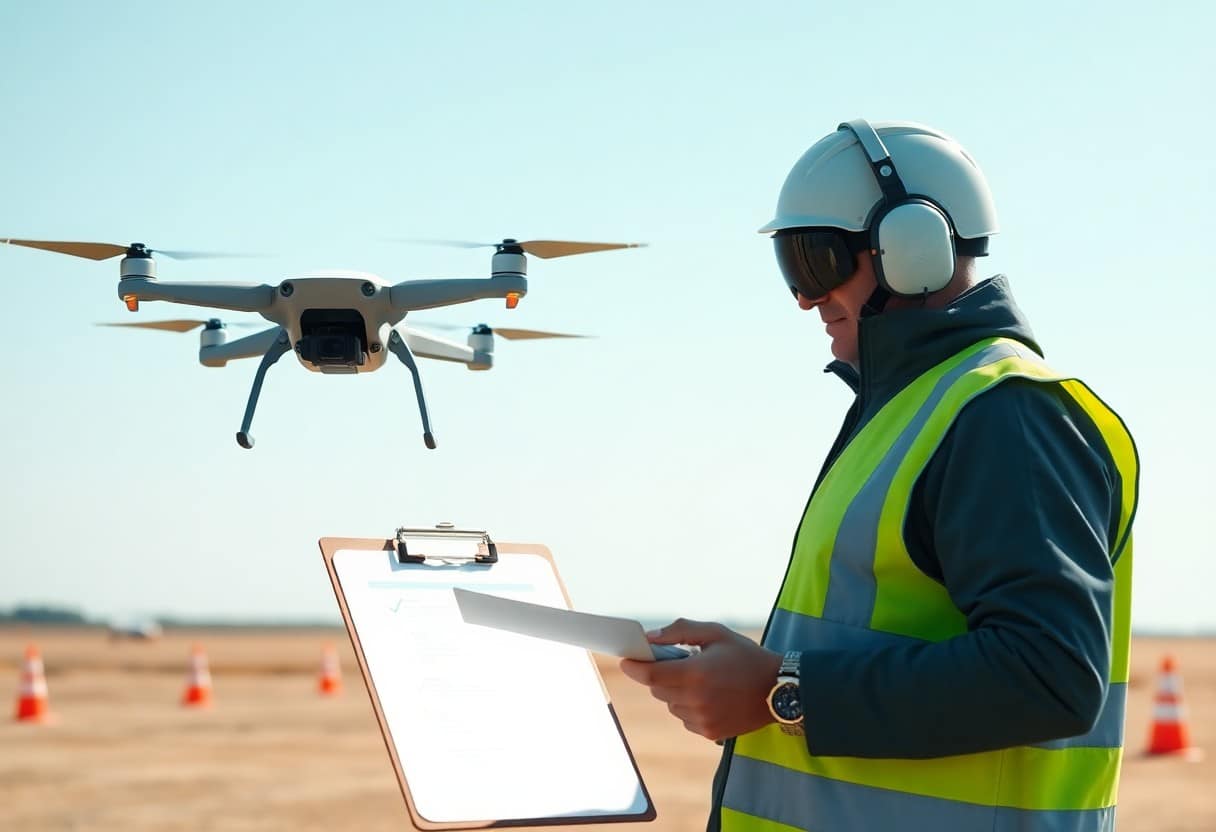
Conduct pre-flight inspection
Before operating your drone, you must conduct thorough pre-flight inspections to ensure the safety and performance of your equipment. These inspections not only protect your equipment, but also enhance your flight safety. Therefore, carefully check every important component and setting before each flight.
Check the drone
During the pre-flight inspection, you need to be careful toCheck the overall condition of the droneCheck for damage to the unit. Check that the body is not damaged, that the battery is securely installed, and that all parts are functioning properly. Defective or damaged parts could cause an accident that could affect your safety and the safety of others.
Authentication Software Updates
Make sure your drone is installed with the latestSoftware UpdatesThis is an important step in maintaining the operational safety of the equipment. Any missed updates may affect the performance and safety features of the drone, thereby increasing the risk of accidents.
Software updates are not only designed to fix known bugs, but also to improve the system'sStability and safety. Check the manufacturer's official website or use the drone application to regularly check for updates to ensure you have the latest features and improve the performance of your drone. If you fail to update the software in time, you may face the following problemssecurity holeThis will affect the normal operation of the drone and your flying experience.
Keep your eyes open.
In drone operations.Keep your eyes on the airplane.It is one of the key steps to ensure safety. You must be able to see your drone at all times so that you can respond to unexpected situations and prevent possible accidents. This not only helps you control the position of your aircraft, but also helps you observe your surroundings and other flying objects.
Maintain visibility with the aircraft
You need to make sure that you can always fly with theSee your drone clearlyIf your view is blocked by an obstacle, it is recommended that you immediately reduce your altitude or move your position to ensure that you continue to observe. If your view is blocked by an obstacle, it is recommended that you immediately reduce your altitude or move your position to ensure that you can continue to observe. This reduces the risk of a flying accident.
Avoiding obstacles and hazards
When operating a drone, alwaysAvoid obstacles and potential hazardsIt's important to be aware of your surroundings at all times. You should always be aware of your surroundings and plan your flight path in advance to ensure that the drone does not hit buildings, trees or other objects. Also, keep an eye out for people and animals so you can adjust your flight direction in time.
During drone operations, you need to be alert at all times, especially if you are flying in a city or busy area. Surrounding Obstructions such as buildings, power lines, trees, etc. It may pose a threat to the drone and may also interfere with the operation of other aircraft. Therefore, it is recommended that when planning your route, you choose as much open area as possible and check the flying environment carefully to ensure the safety of your flight. Due to changes in weather and environment, you also need to adjust your flight plan to avoid unexpected hazards. Staying alert will protect you and others from harm.
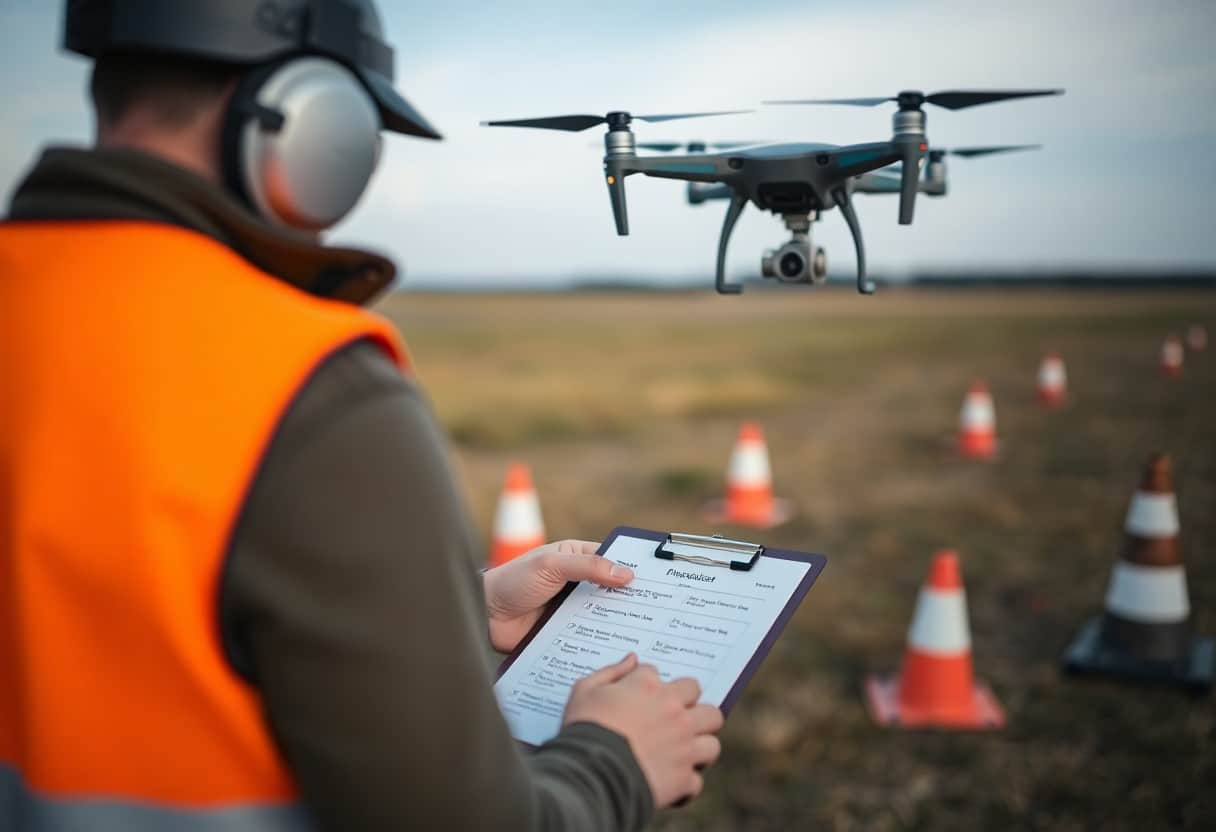
Use the appropriate flight plan
In drone operations.Good Flight PlanIt is an important step to ensure safety. You need to plan every detail of your flight ahead of time, including origin, destination and projected mission conditions. This not only helps you to keep track of your flight, but also reduces the risk of conflicts with other airspace users.
Evaluate weather conditions
Prior to any flight.Evaluate weather conditionsIt's vital. You need to check factors such as wind speed, rainfall and visibility to ensure a safe and efficient flight.
Determine the flight path.
In determining the flight path, theYou have to consider a number of factors.The most important thing you can do is to find the right route to a hazardous area, such as air traffic, terrain, and environmental protection areas. Finding the right path minimizes the risk of accidents and helps you avoid dangerous areas. Consider possible emergency landing sites so you can react quickly in the event of an emergency.
When choosing a flight path, you should use a map and a flight simulator to visualize the entire flight, which will help you better identify potential obstacles and other drones.Choose routes that are open and accessible as much as possible.to minimize potential collisions with people or objects. Additionally, it is necessary to base the currentAviation RegulationsSet the flight altitude and pay attention to the setting of the restricted area. All in all, good path planning can increase your flight safety and realize efficient flight missions.
Battery life monitoring
During drone operation.Battery life monitoringIt's important. Make sure your drone checks the health of the battery before each flight. When the battery is undercharged, flight stability and safety may be compromised. For novice pilots, please refer toWhat basic drone controls should every new pilot be familiar with?for more guidance.
Check Power Levels
You should carefully check the power level of your drone before each flight. Make sure you know the battery charge status and charge it regularly to maintain optimal flight performance.A low battery may result in unsafe landing or even damage to the drone.
Planned Landing
Planning an effective landing is critical to the safe operation of your drone. You need to take into account battery life and current flight distance to ensure that the drone can land within safe limits.
When planning your landing, you should make sure to take into account the terrain, wind speed and estimated battery life.Calculating the distance in advance and choosing a suitable landing site can effectively minimize accidents caused by battery depletion. If the drone is found to be near a low battery levelReturn procedures should be initiated immediatelyTo ensure a safe landing. Being prepared reduces risk and increases your confidence and safety in operating your drone.
Communicating with others
In drone operations.Maintain clear communication with othersIt's important. You need to make sure that those around you are aware of what you are doing, especially in busy airspace or crowded areas. Good communication can help minimizeAccidents and misunderstandingsThe risk of a breach of contract is a risk that provides for your safety and the safety of others.
Notify nearby airplanes
Before you operate the drone.We have to notify the nearby planes.This is especially true when you are flying in airspace. This is not only for your safety, but also out of responsibility to other aircraft and their passengers. With effective notification, you can prevent potential conflicts or accidents from occurring.
Use the appropriate signal
When operating the drone, make sure you use theAppropriate signals to notify surrounding personnelYour intentions and actions. This includes gestures, lights or audio signals, depending on the needs of the environment.
The use of appropriate signals can effectively enhance the safety of your operations. For example, when maneuvering a drone in a restricted area, you can use theGestures or light signalsTo clearly communicate the direction and status of the drone. This not only increases awareness of your actions, but also reduces the chance of accidents. Remember to use these signals in accordance with local regulations and ensure that others have enough time to respond to your signals.
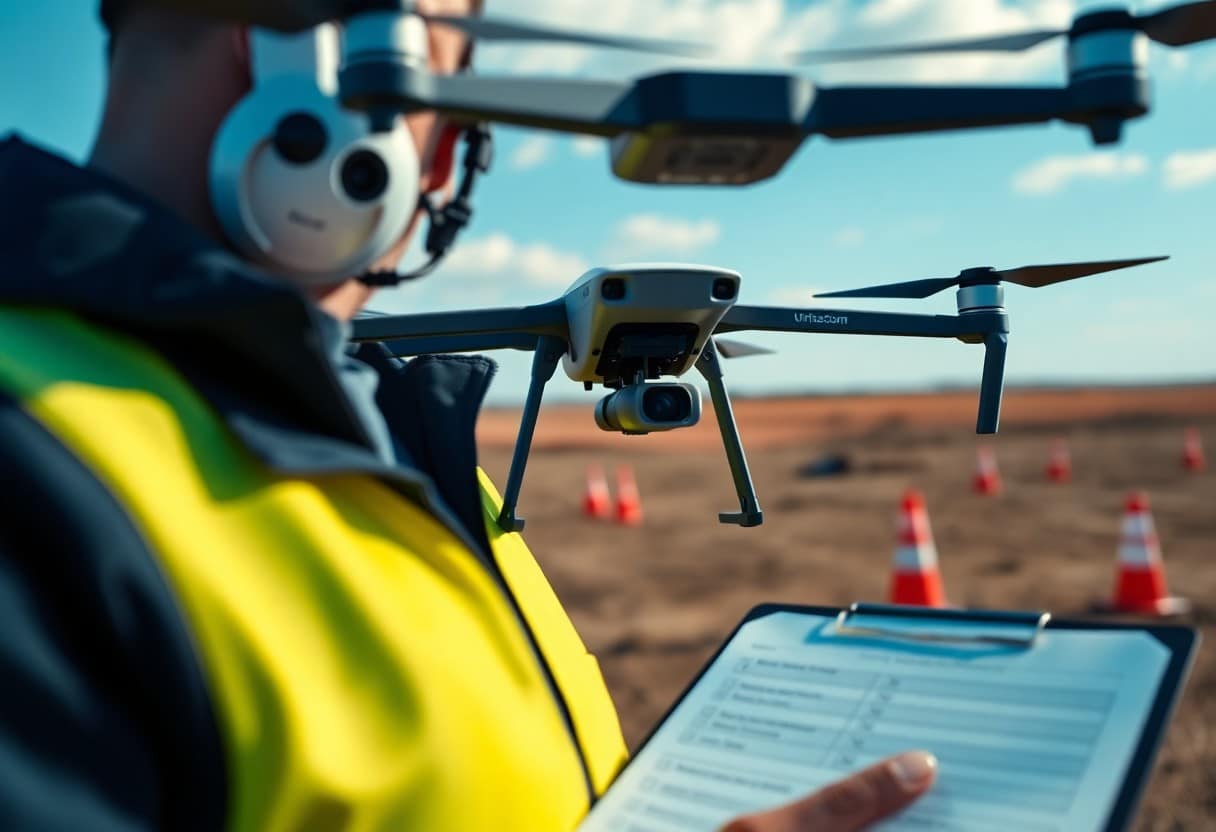
Compliance with Operational Restrictions
When operating a drone, you mustFollow all operating limitsTo ensure safety. This includes following altitude, distance, and other relevant regulations. For more guidance on safe practices, please refer toHow to prepare for the drone authorization process?The
Respect for height restrictions
You mustRespect all height restrictionsThis is to protect personnel and other aircraft on the ground. Exceeding the legal altitude may result inPotential DangerIf the aircraft collides with other aircraft or violates legal regulations, the aircraft will be subject to the same conditions as other aircraft.
Limit flight time
When operating a UAV, you shouldLimit flight timeThis reduces the risk of equipment failure. Prolonged flight may result in battery depletion or system malfunction, which may threaten safety.
Limiting flight time is an important aspect of ensuring that you operate your drone safely. You need to constantly monitor your aircraft's battery level and other performance indicators to avoid malfunctions. It is recommended that you limit your flight time prior to flight to30 minutes.Inside, depending on your device and environmental conditions. Regularly check the operation of your equipment and develop a contingency plan in advance so that if a problem occurs, you canQuick ResponseThis not only protects your device, but also the safety of others.
Continuous training
It is vital to ensure that you keep your skills in drone operation up to date. Regular training not only improves your ability to operate, but also keeps you up to date with the latest safety regulations. We recommend that you take a look atChange Your Lens - 8 Steps to Cinema Drone Photographyto enhance your understanding of safe practices.
Completion of certification
Obtaining the proper certification is important for safety. The certification process will help you understand the regulations and laws governing drone operations, which will ensure that you follow all the necessary steps when flying.
Participation in Seminars
Attending a professional drone seminar is aExpanding Knowledge and SkillsThe seminars are a great opportunity for you to share your experience with other professionals and learn about the latest technologies and specifications. At these seminars, you will have the opportunity to share your experience with other professionals and learn about the latest technologies and specifications.
The drone scene continues to change.Participation in SeminarsKeeping you up to date with the latest information and improving the safety of your operations. These events often cover industry trends, technological innovations, and safety guidelines to ensure you stay current. Being actively involved helps you build a reliable network and gain access to valuable resources and support.
Reported Incidents
You must report any incidents or accidents that occur during drone operation. This is not only a legal requirement, but also an important step in ensuring the safety of others. To increase the safety of your drone operation, you should keep a detailed record and report all incidents.
Record any accidents
Whenever an incident occurs, it is important that you document all the details of the incident as soon as possible, including important information such as the time, location, environmental conditions, and the course of the incident. These records not only help you review the root cause of the incident, but also play an important role in subsequent disputes.
Timely notification to the authorities
After the accident.Immediate notification to the relevant authoritiesIt is of paramount importance. Whether operating in civil airspace or other areas, it is the responsibility of the designated agency to intervene to investigate any potential safety issues.
When notifying authorities, you should provide clear and accurate information about the accident, including all safety hazards you observed. Failure to report may result in more serious consequences, including legal liability or license revocation.Remember, timely reporting is not only a responsibility, it's also a way to protect your operation.
10 Key Steps to Safe Drone Operation Rules
It's important to follow the drone rules for safe operation. By following these 10 key steps, you can ensure that your flying activities are in compliance, reducing risk and increasing safety. First, understand local laws and regulations, then make sure your drone is properly registered and authorized. In addition, it is essential to conduct regular equipment checks, stay away from crowds and sensitive areas, take necessary precautions, and maintain good communication with local aviation regulators. By following these steps, you will be able to operate your drone safely and effectively.
Frequently Asked Questions
Q: What are the rules of drone operation?
A: The UAS Code of Conduct is a set of laws and guidelines for Unmanned Aerial Vehicles (UAS) to ensure the safe and legal operation of UAS and to protect the public and the airspace.
Q: Why is it important to follow the Ten Key Steps to Safe Operation?
A: Following these ten key steps will reduce the risk of drone accidents, ensure operational compliance, and enhance the protection of the surrounding environment and personnel, thereby improving overall operational safety.
Q: What are the first steps?
A: The first step is to thoroughly understand local drone laws and regulations. This includes obtaining the rules and restrictions of the local aviation authority and ensuring that all operations are conducted within the legal framework.
Q: How do I perform a pre-flight check?
A: Before each flight, a thorough check is conducted, including battery status, propeller safety, communication equipment and navigation system testing to ensure the drone is operating in optimal condition.
Q: How do I ensure a safe distance for my flight?
A: Operators need to be aware of possible obstacles and personnel in the flight area and set safety distances according to the operator's manual and local regulations to avoid risks and accidents.
Q: What should I do in unsuitable weather conditions?
A: If weather conditions such as high winds, rain, snow or lightning do not meet the flight criteria, the flight plan should be canceled or postponed immediately to protect the safety of the drone and the people around it.
Q: What should I do if I lose control of the drone in the air?
A: The operator should set the auto-return function before flight, remain calm, and follow the emergency procedures in the operator's manual, such as manual control to return to the ground or immediate forced landing.
